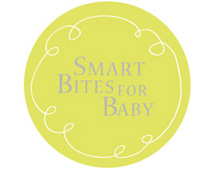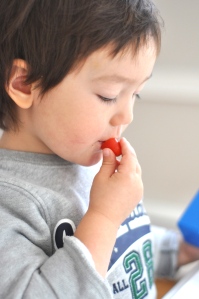Feeding Tips
Getting your child to eat is a challenging feat for many parents. There are ups and downs, and as a general rule, you need a ton of patience. From the very beginning, my son was not a big eater. He would still prefer to play with his toy cars than sit down for a meal. So feeding was a perpetual challenge for us – how to feed him, how often, how to keep him engaged, how to overcome pickiness, how to get him to eat with his fork instead of with his fingers.
I have grown to see eating/feeding as an activity in its own right, and try to find ways to deal with varying issues which emerge at different phases of development.
5-6 Months:
Most babies are ready for solids when they:
– Hold their heads up by themselves
– Expresses interest in food and in eating when others are eating
– Seems hungry even after being fed milk
Tips for First Foods:
When preparing the first meals for your baby, make sure it is soupy and not textured.
Your baby will probably not know how to swallow, and the first meals will inevitably dribble down their chins. Keep at it, and they will get it after the first feedings.
Pediatrician will usually recommend starting babies with single grain cereal which is iron-fortified for babies. You can start with rice baby cereal and mix in breast milk or formula.Your baby should be eating 2-8 tablespoons per day in addition to the 32oz of breast milk or formula per day.
You should introduce fruits and vegetables which are mild, such as potatoes or sweet potatoes, and space out each new foods with a minimum of 4 days to make sure there is no allergic reaction to the foods.
Your baby can enjoy:
Rice cereal
Rice Porridge
Potatoes
Bananas
Butternut squash
Apples
Carrots
Avocado
7-8 Months:
Your baby can begin to eat mixed grain baby cereal, as well as barley or oatmeal cereal.
You can introduce protein foods, such as strained tofu, pureed meat, chicken or fish.
The pureed foods should be smooth and creamy.
Your baby is now more interested in food, and may be picking up the food by himself.
Your baby can now enjoy:
Peas
Peach
Parsnip
Yogurt
Nectarines
Plums
Prunes
Mango
Papaya
Pears
Egg Yolk, hard cooked
Apsaragus
Green beans
Apricot
Grape
9-12 Months:
Feeding time is becoming more and more challenging as your little one becomes more active and distracted. You can tell interesting stories about the food, where it comes from or how it helps his growing body to keep his interest at the table. It is important not to lose your patience and be tolerant with your baby. Discipline is not effective at this stage, so you need to work on positive reenforcement and encourage interest in food by pointing out the colors, textures and different sensations of the foods.
The foods can now be given more texture and now that you have seen how your baby reacts to a variety of food, meals can have an interesting array of choices.
Your baby can now enjoy:
Beets
Tahini
Ground nuts
Ground seeds
Kelp and seaweed
Cantaloupe
Honeydew
Kiwi
Watermelon
Okra
Broccoli
Parsley
Wheat germ
Beans and other legumes (lentils, split peas)
Pineapple
Brussels sprouts
Cauliflower
Spinach
Kale
Eggplant
Pasta
Foods t to Avoid:
You baby should not be given these foods until 12 months of age:
– Cow’s milk
– Honey
– Citrus fruits
– Berries (strawberries, blueberries, blackberries, raspberries)
– Egg whites
They should not be given:
– Artificial sweeteners
– Candies
– Carbonated drinks
– Heavily spiced foods
Choking Hazard:
Your baby should not be left alone while eating, and the following foods should be avoided as they could cause choking:
– Popcorn
– Hard Candies
– Whole grapes
– Peanut Butter
– Whole nuts or seeds
– Potato chips, pretzels or corn chips
– Whole dried fruits.
– Hot dogs and sausages
– Plain granola and wheat germ on its own
– Gum
– Gummies



